Abstract
Analyses of free-operant choice usually employ one of two general procedures: the simple concurrent procedure (i.e., a concurrent variable-interval variable-interval schedule) or the concurrent-chains procedure (i.e., concurrently available initial links, each leading to an exclusively available terminal link). Theories about choice usually focus on only one of the two procedures. For example, maximization theories, which assert that behavior is distributed between two alternatives in such a way that overall rate of reinforcement is maximized, have been applied only to the simple concurrent procedure. In the present paper, a form of the pairing hypothesis (according to which pairings between one stimulus and another affect the value of the first, and pairings between responses and reinforcers affect the value of the former) is developed in a way that allows it to make qualitative predictions with regard to choice in a variety of simple concurrent and concurrent-chains procedures. The predictions include matching on concurrent variable-interval variable-interval schedules, preference reversal in the self-control paradigm, and preference for tandem over chained terminal links.
Keywords: choice, reinforcement, conditioned reinforcement, matching, maximizing, melioration, concurrent schedules, concurrent-chains schedules, feedback functions
Full text
PDF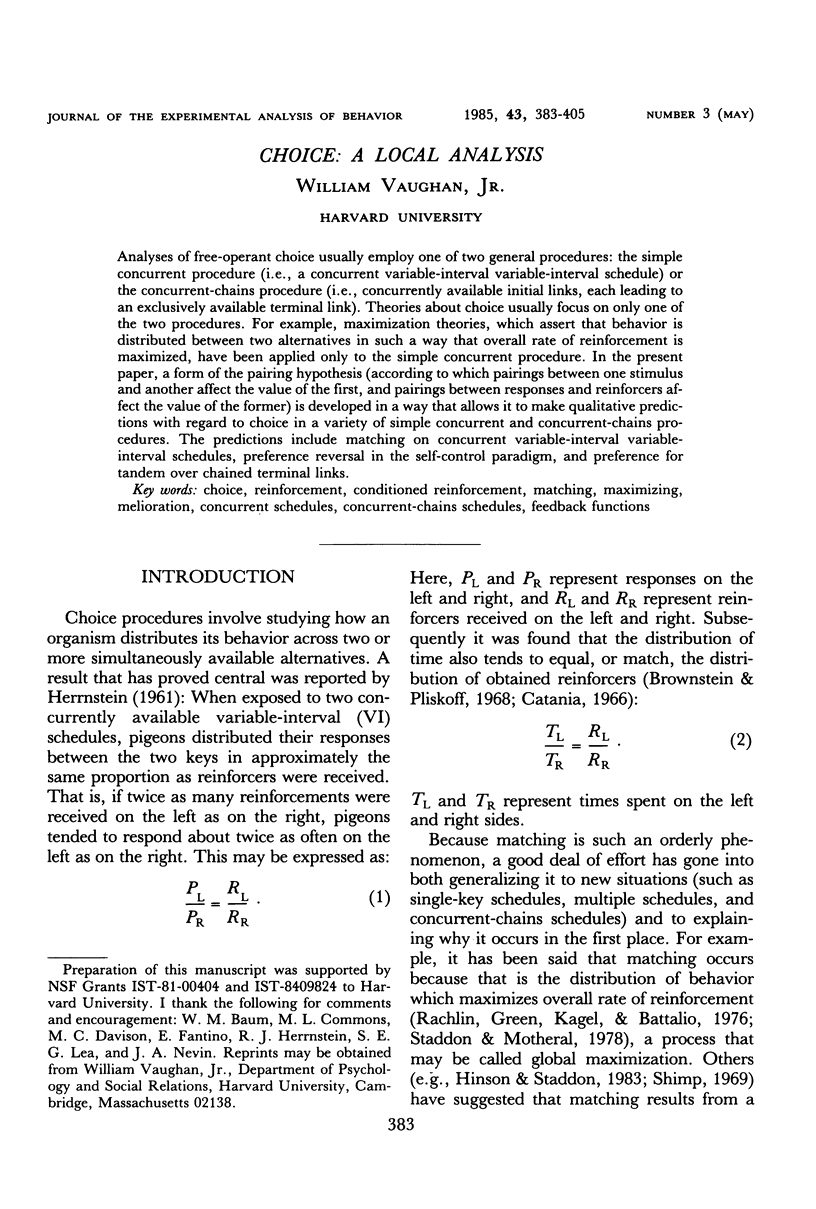
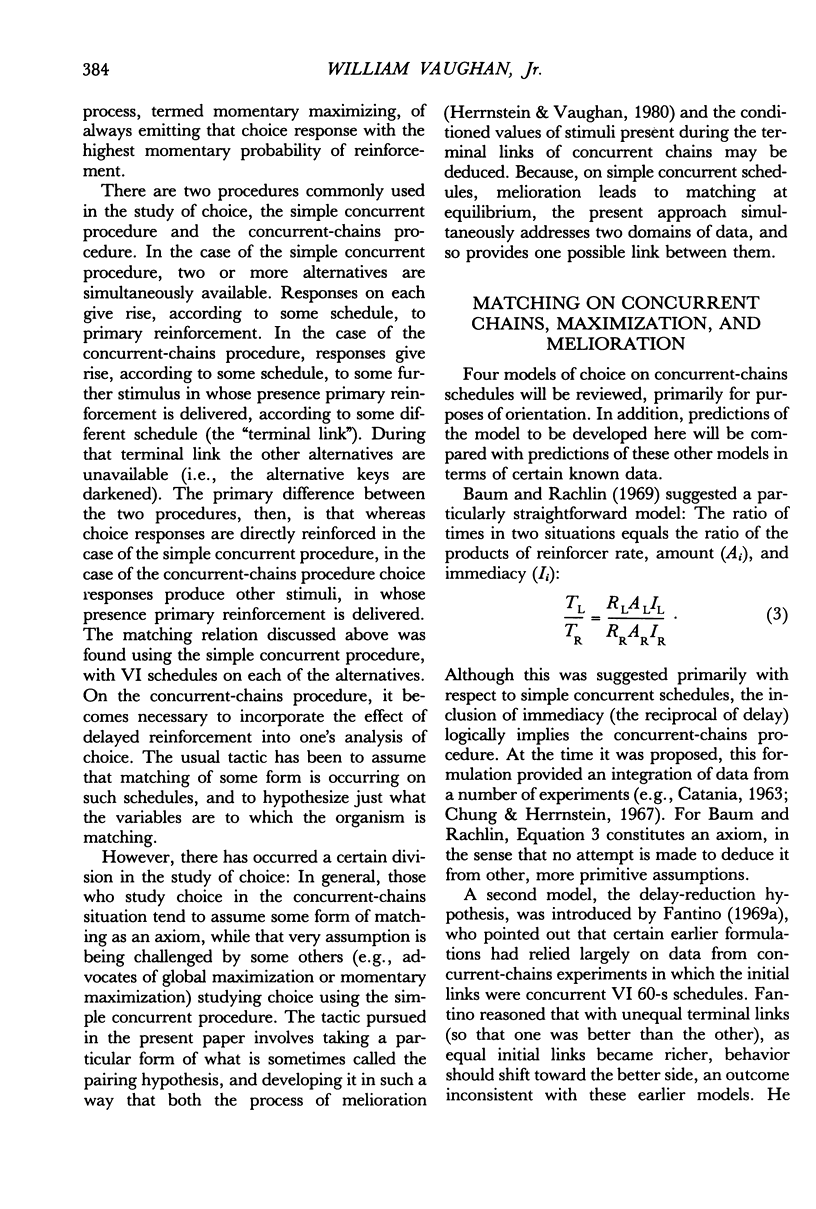
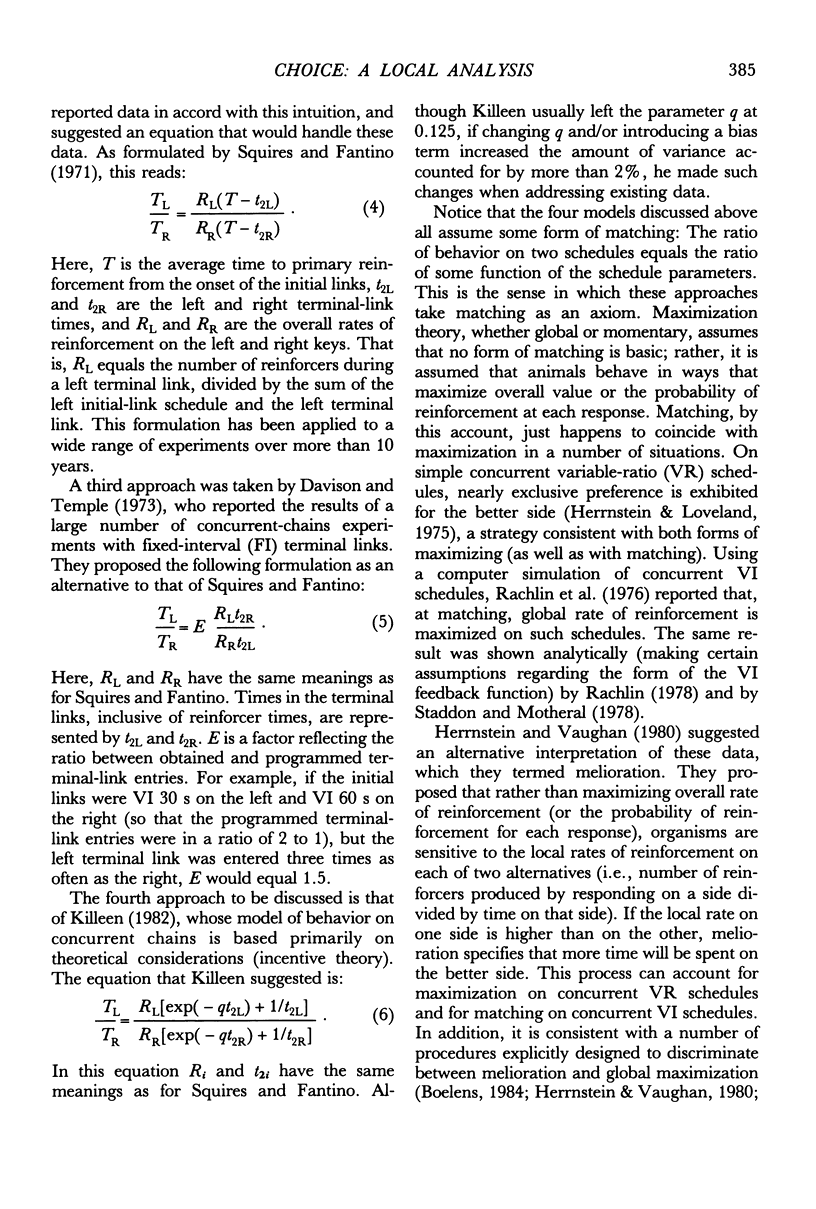
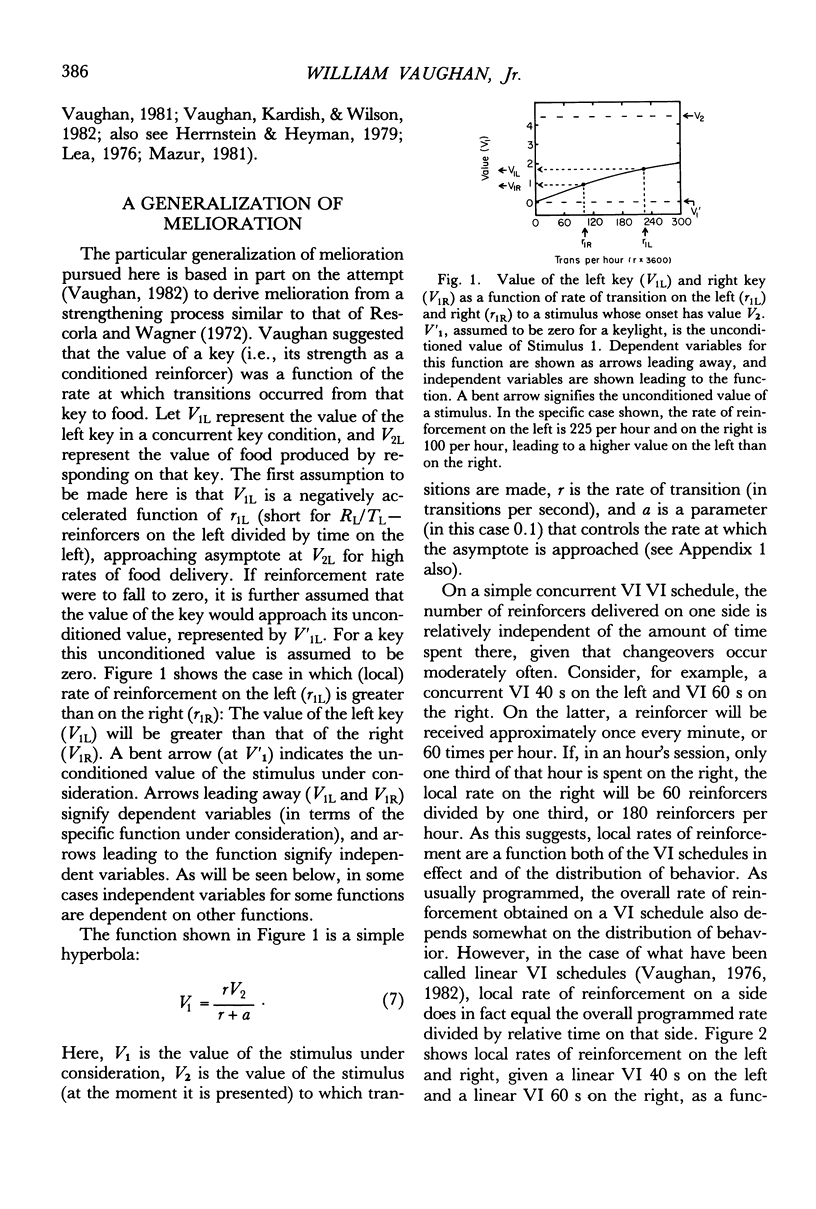
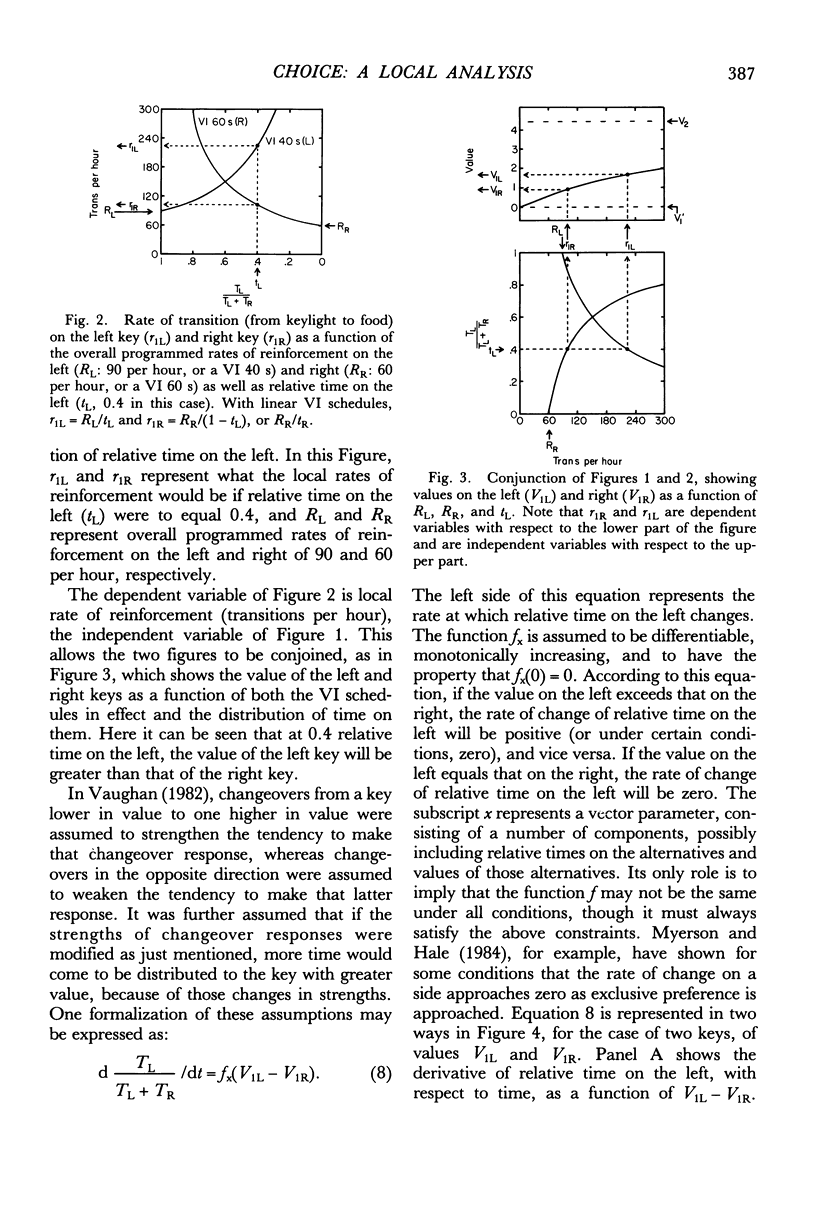
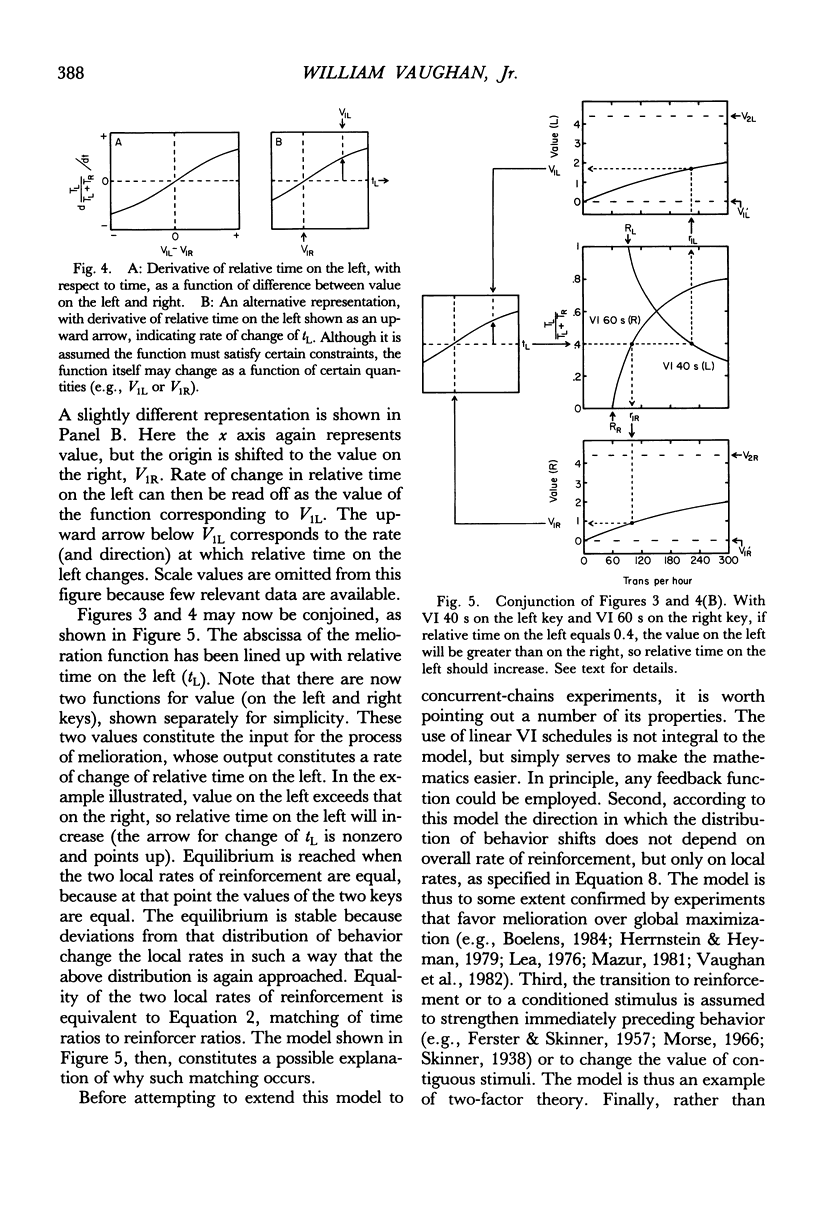
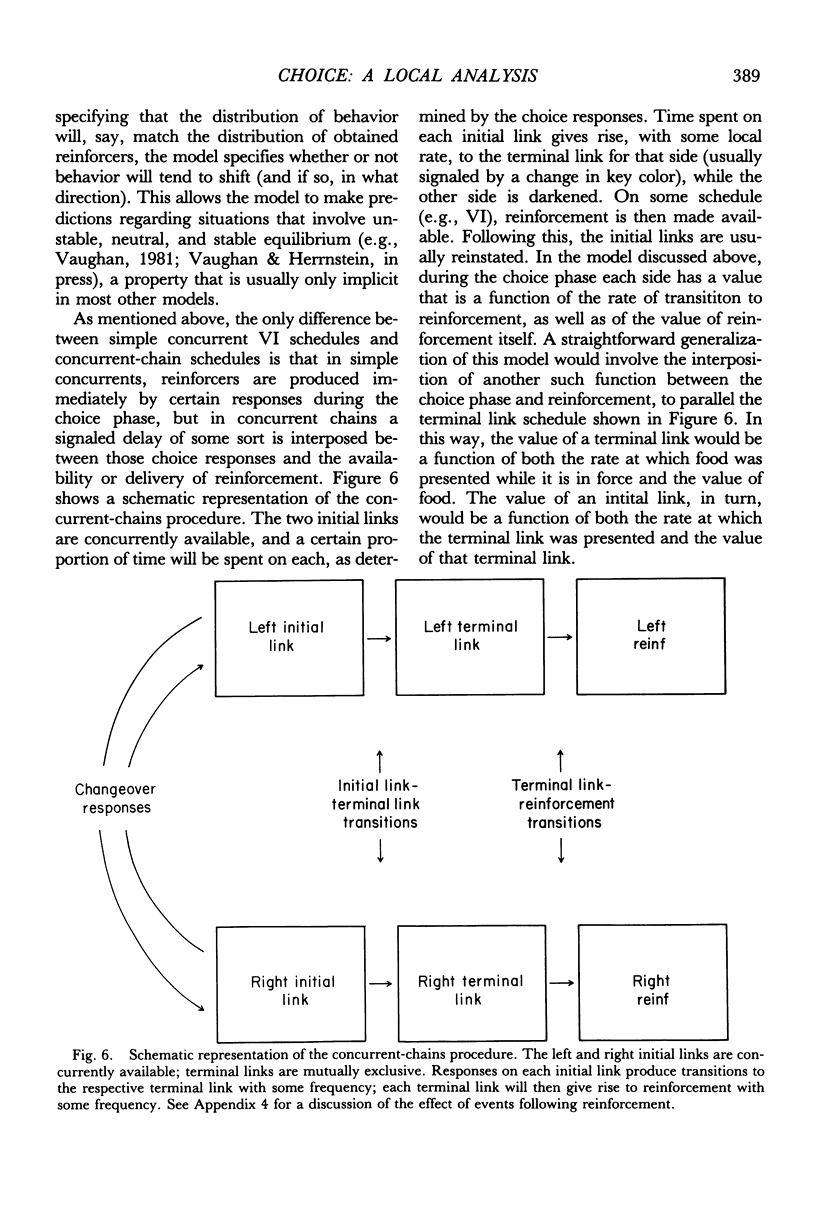
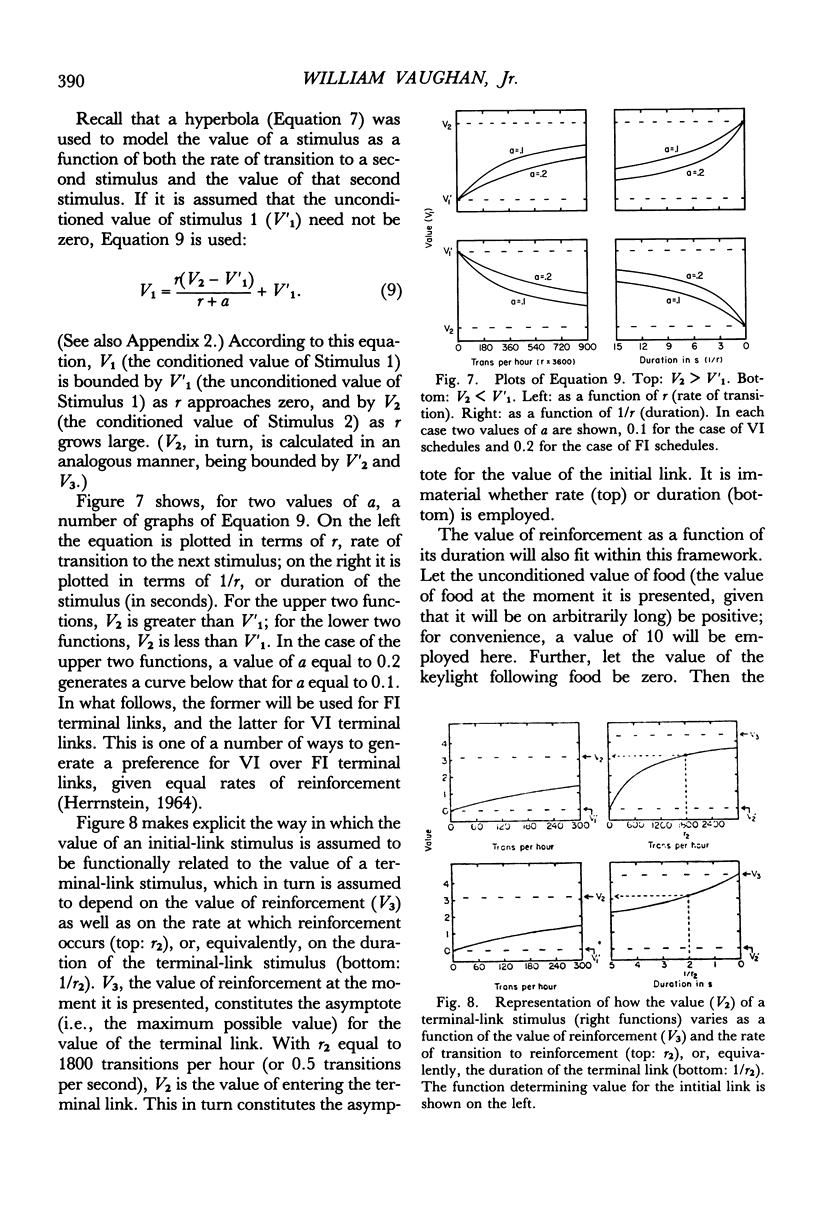


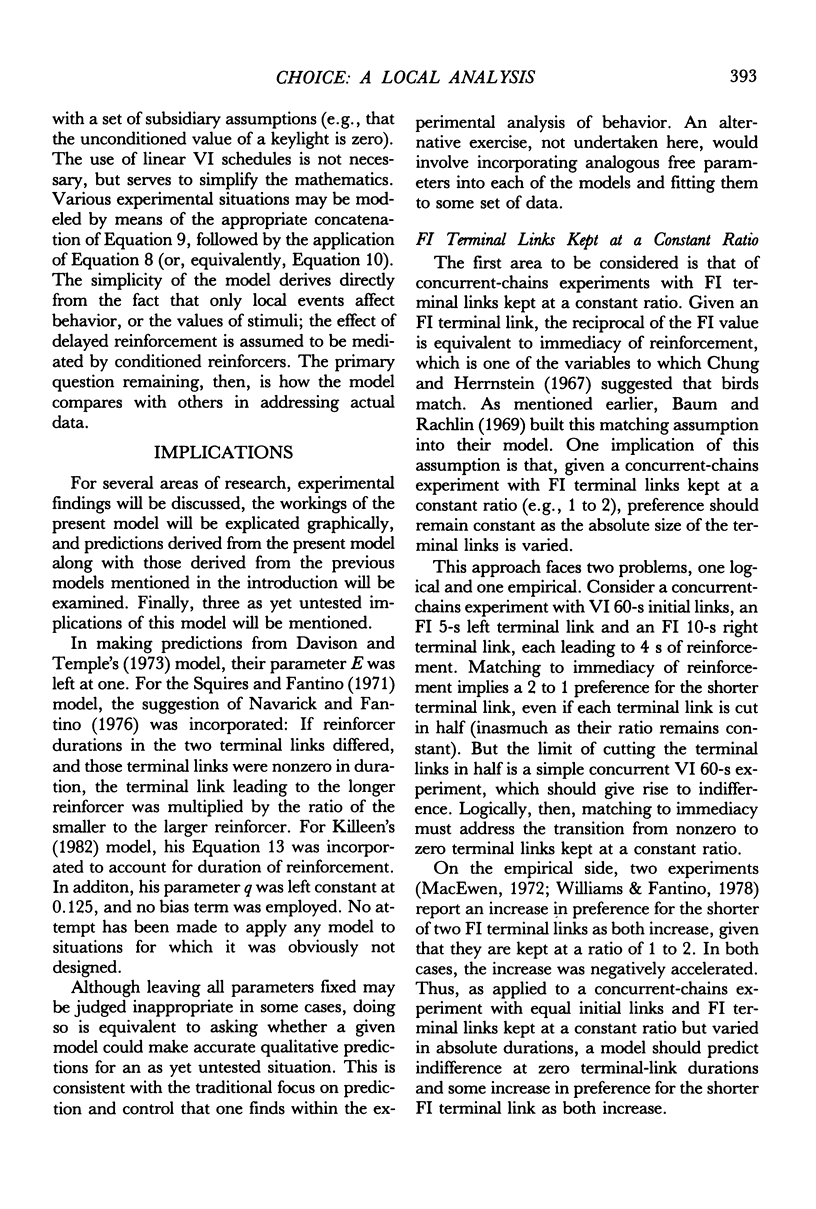
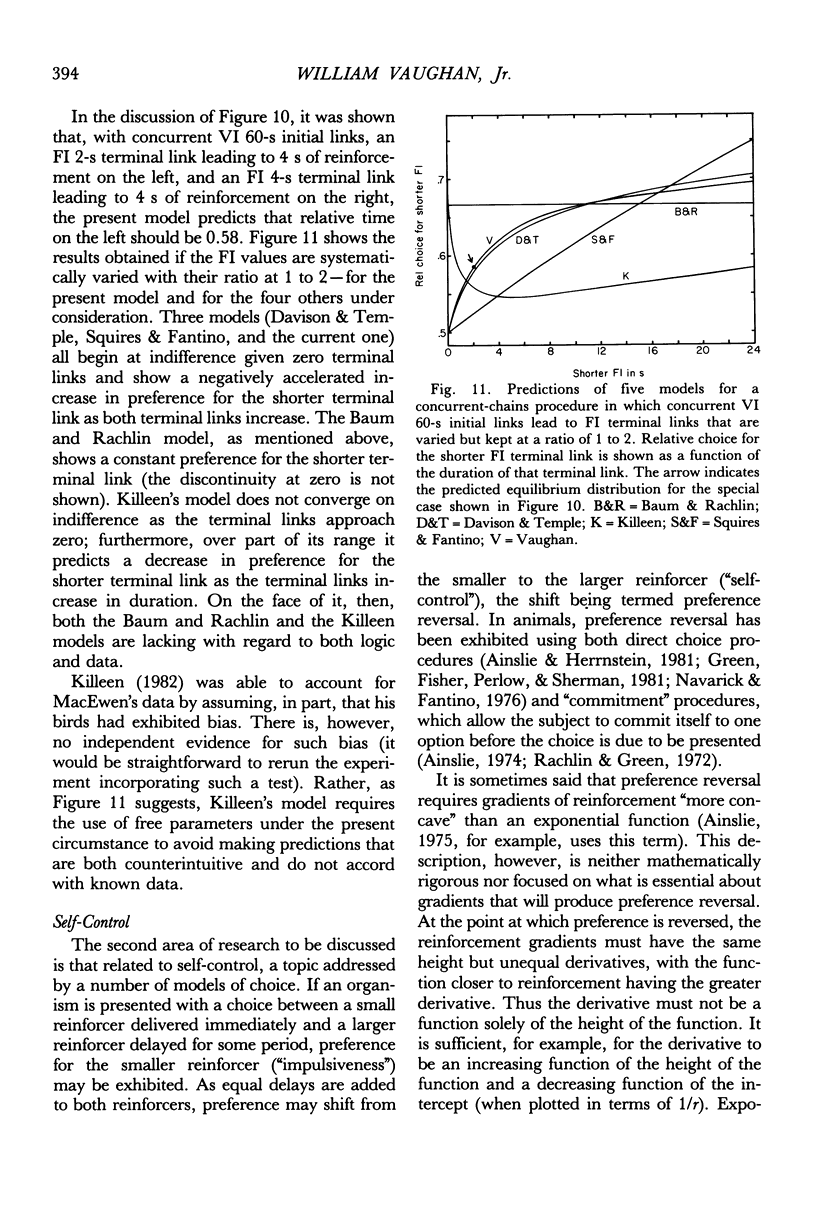
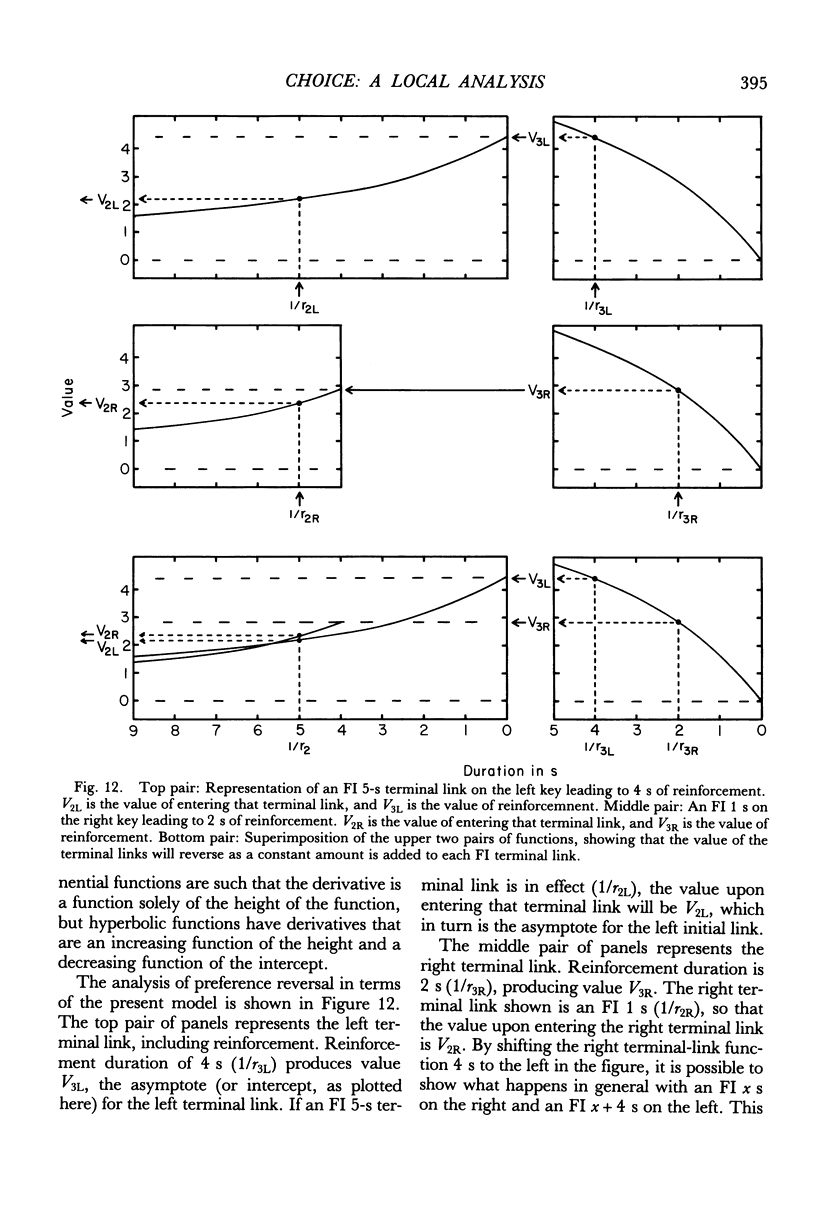
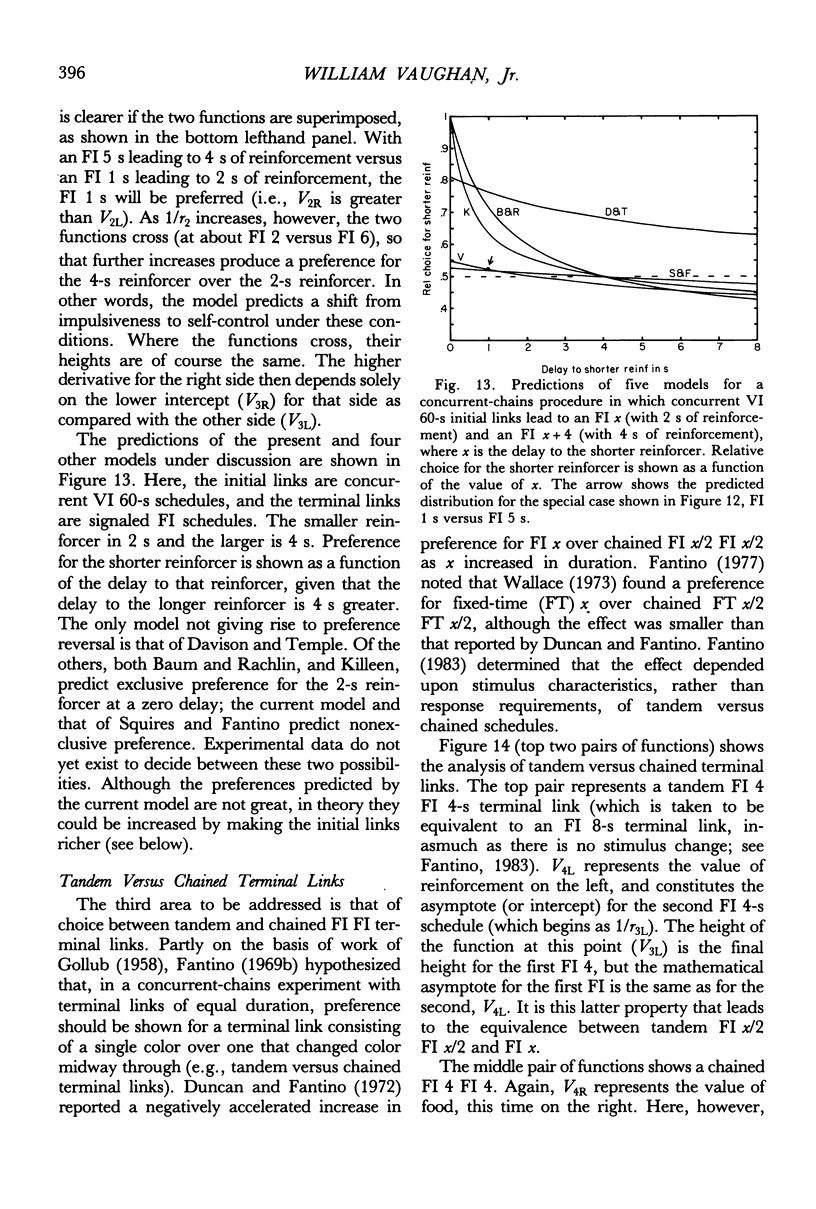
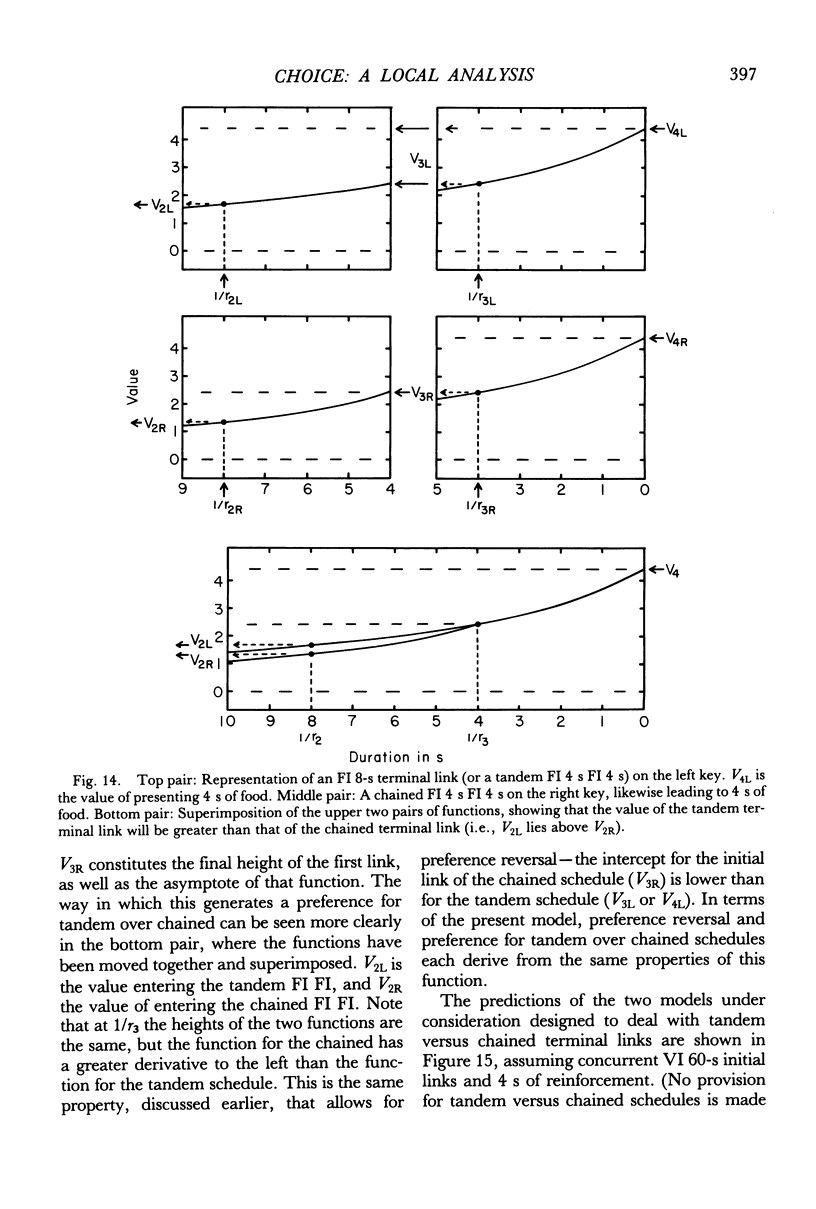
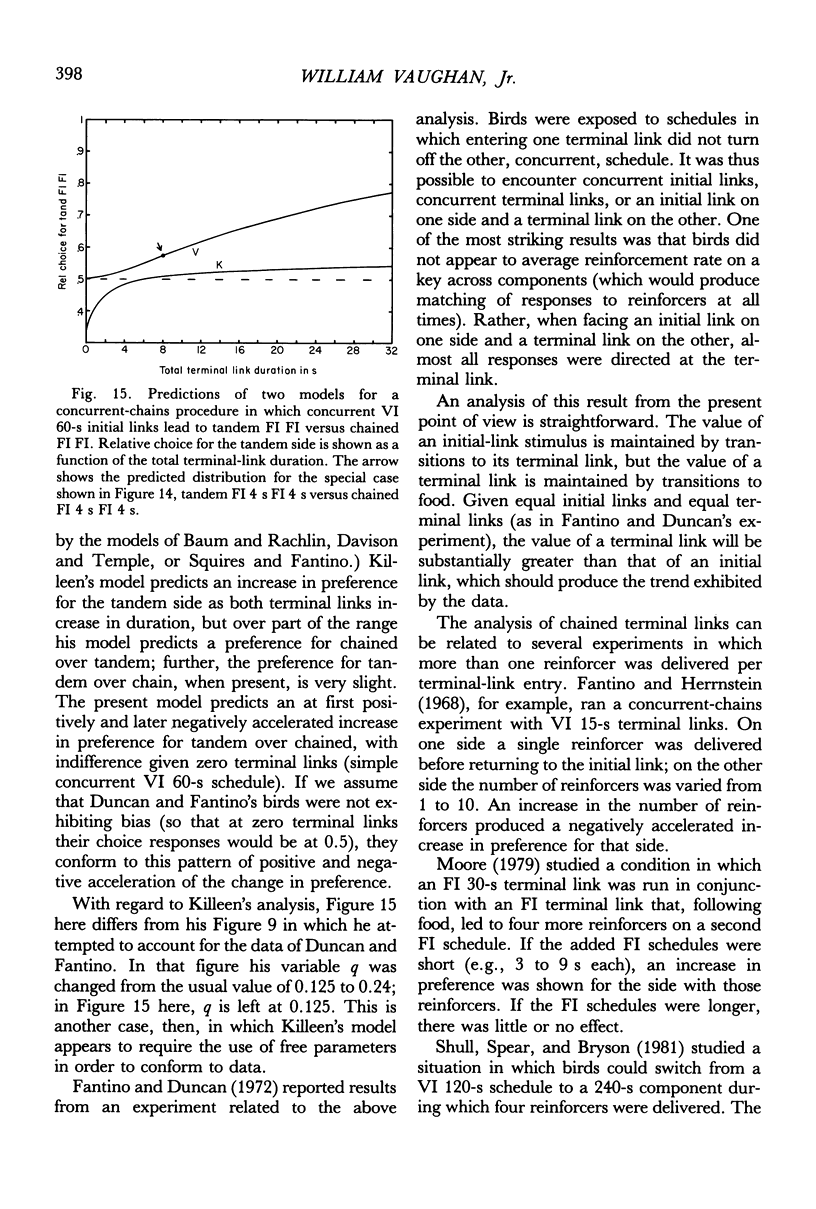
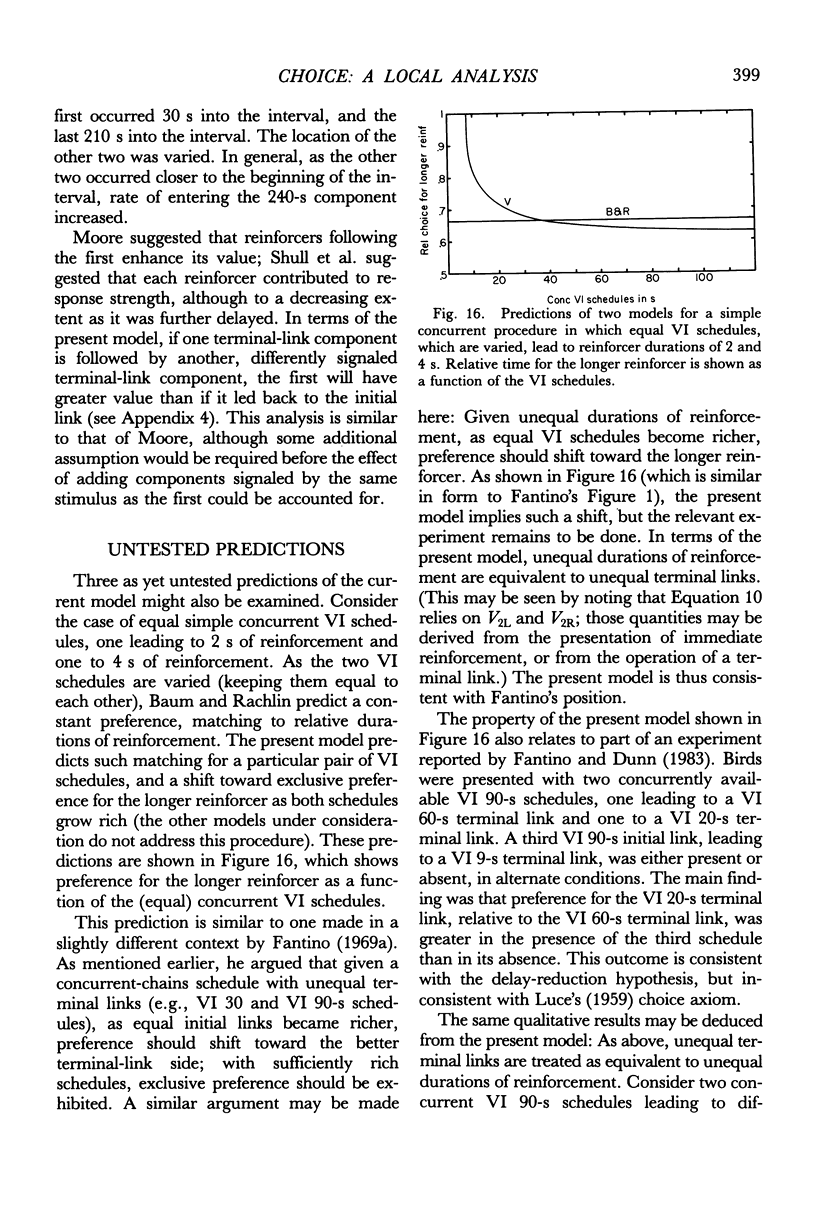
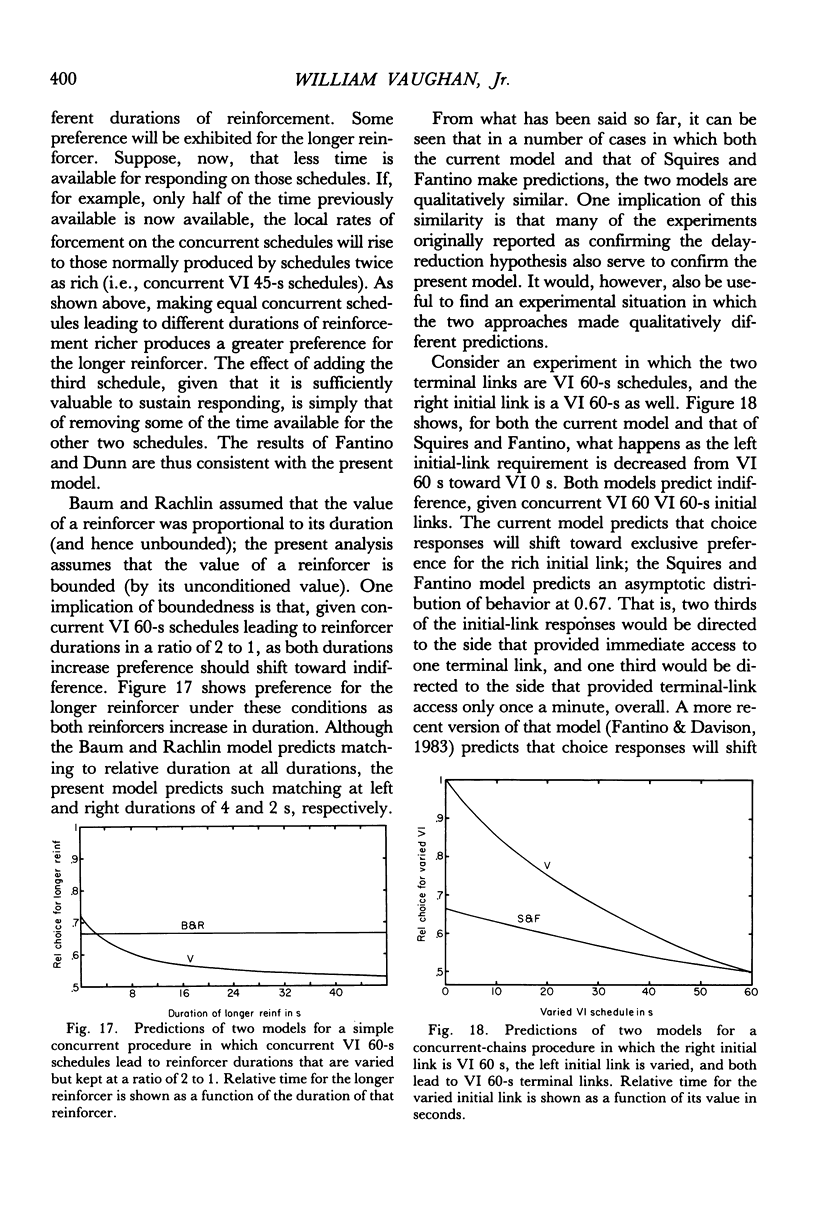
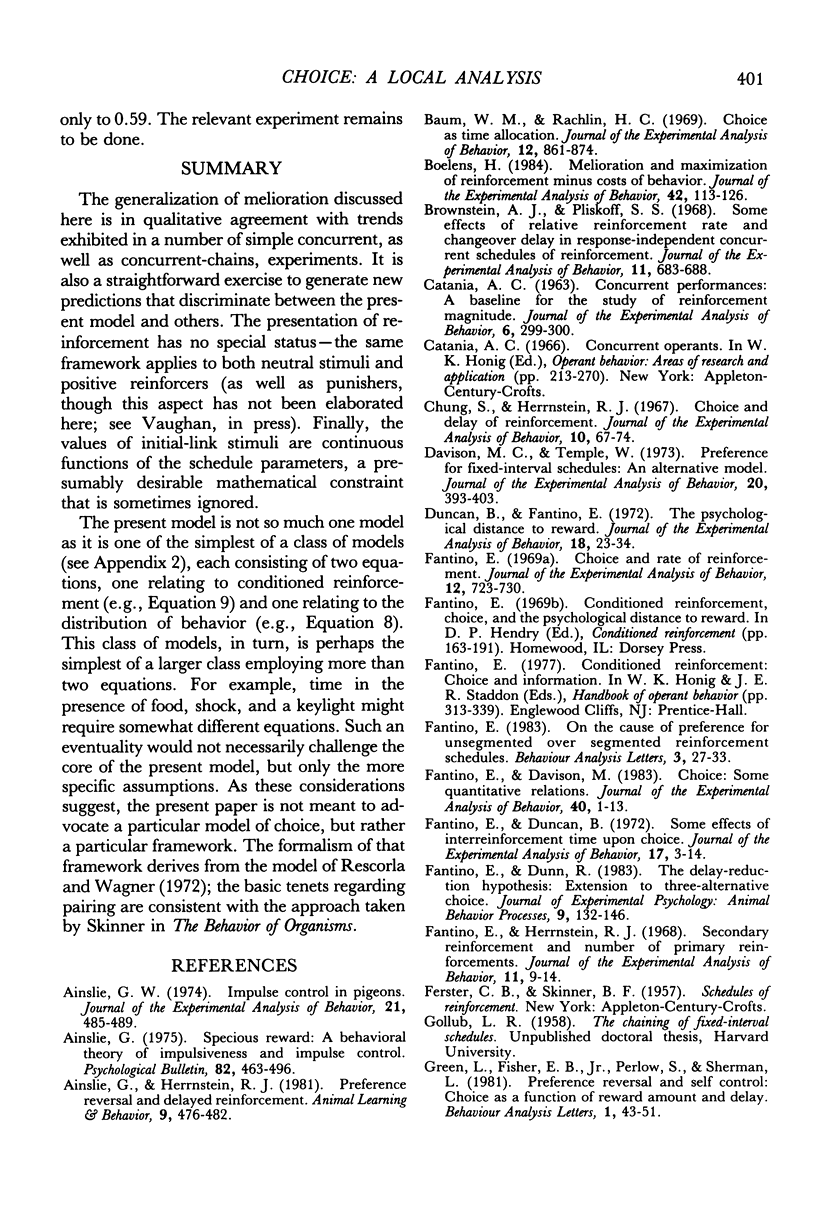
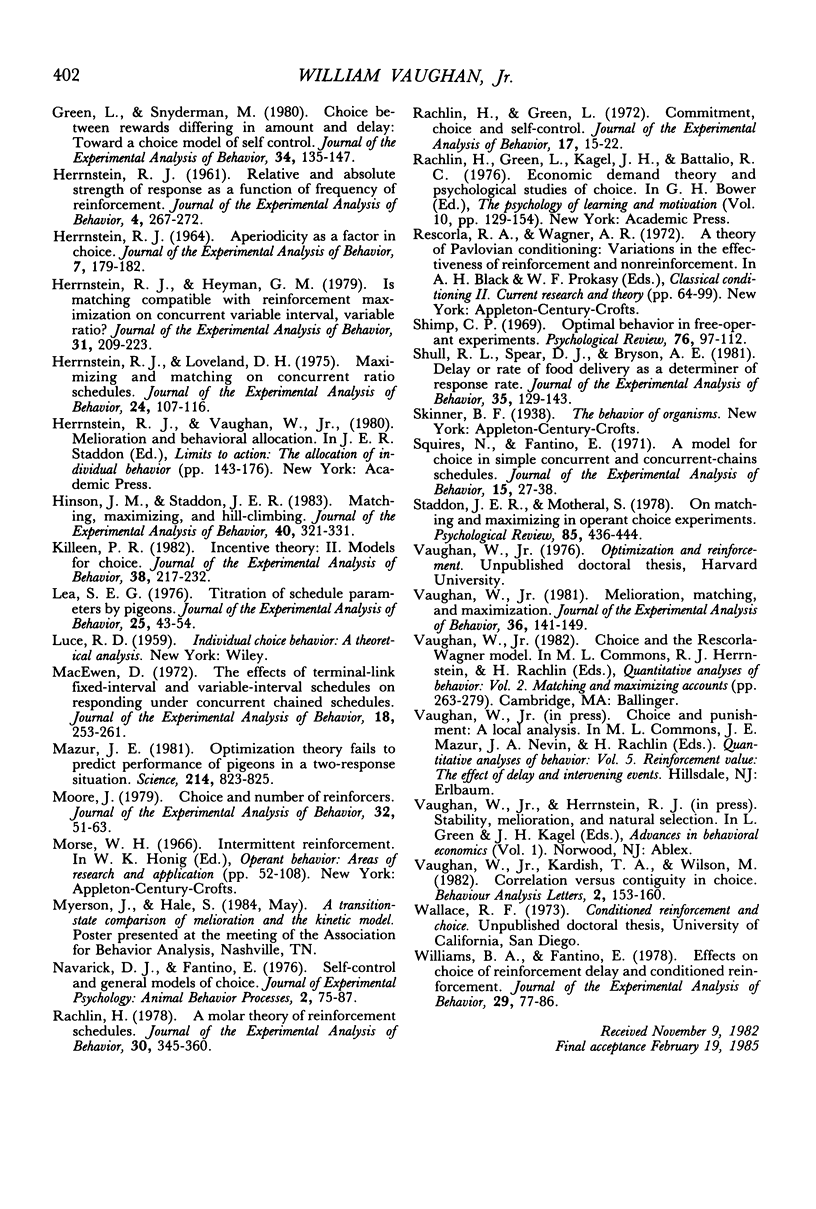

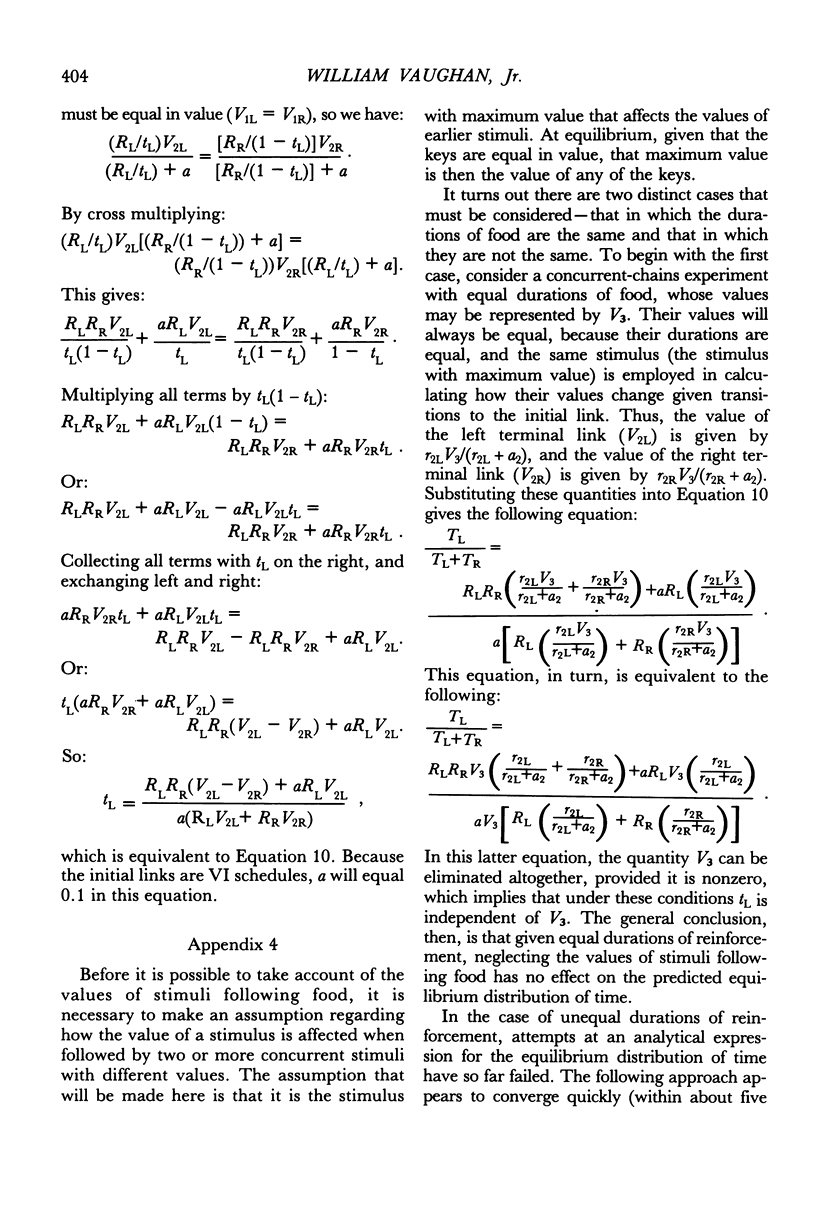
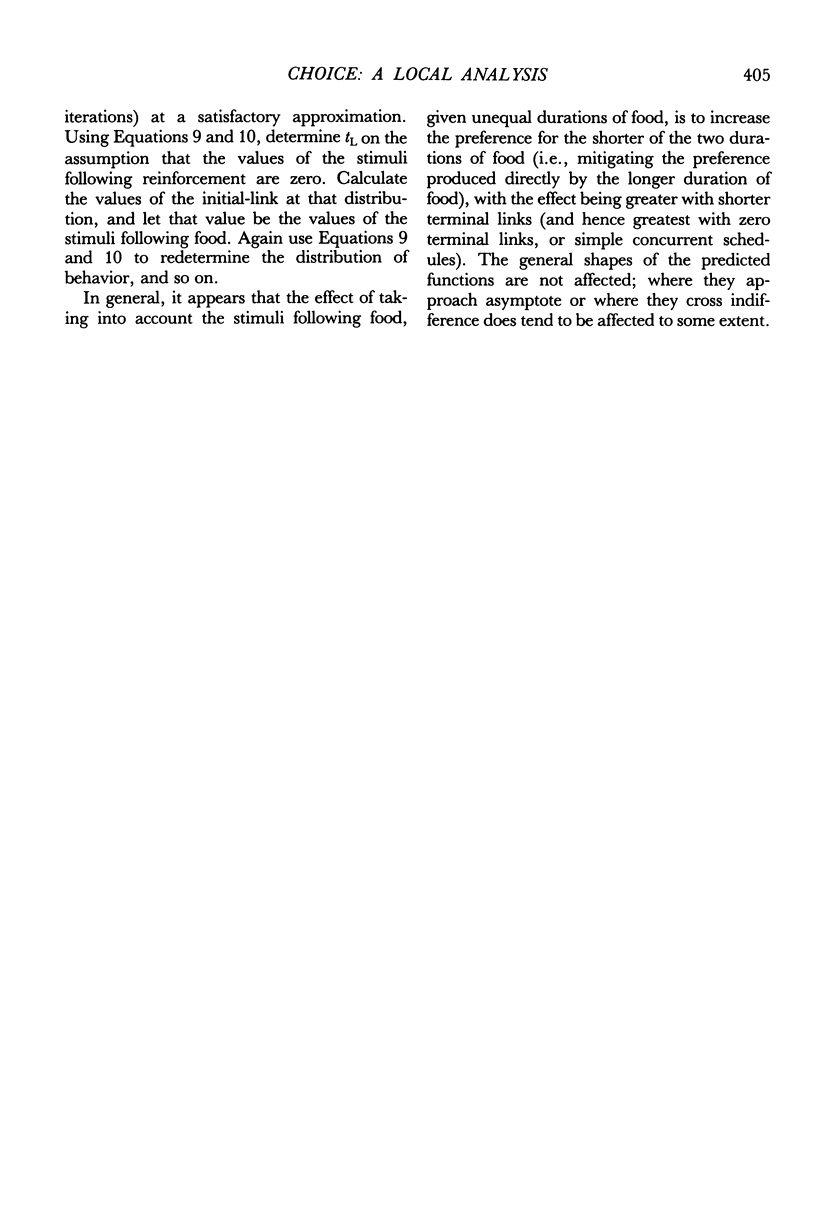
Selected References
These references are in PubMed. This may not be the complete list of references from this article.
- Ainslie G. W. Impulse control in pigeons. J Exp Anal Behav. 1974 May;21(3):485–489. doi: 10.1901/jeab.1974.21-485. [DOI] [PMC free article] [PubMed] [Google Scholar]
- Ainslie G. Specious reward: a behavioral theory of impulsiveness and impulse control. Psychol Bull. 1975 Jul;82(4):463–496. doi: 10.1037/h0076860. [DOI] [PubMed] [Google Scholar]
- Baum W. M., Rachlin H. C. Choice as time allocation. J Exp Anal Behav. 1969 Nov;12(6):861–874. doi: 10.1901/jeab.1969.12-861. [DOI] [PMC free article] [PubMed] [Google Scholar]
- Boelens H. Melloration and maximization of reinforcement minus costs of behavior. J Exp Anal Behav. 1984 Jul;42(1):113–126. doi: 10.1901/jeab.1984.42-113. [DOI] [PMC free article] [PubMed] [Google Scholar]
- Brownstein A. J., Pliskoff S. S. Some effects of relative reinforcement rate and changeover delay in response-independent concurrent schedules of reinforcement. J Exp Anal Behav. 1968 Nov;11(6):683–688. doi: 10.1901/jeab.1968.11-683. [DOI] [PMC free article] [PubMed] [Google Scholar]
- CATANIA A. C. Concurrent performances: a baseline for the study of reinforcement magnitude. J Exp Anal Behav. 1963 Apr;6:299–300. doi: 10.1901/jeab.1963.6-299. [DOI] [PMC free article] [PubMed] [Google Scholar]
- Chung S. H., Herrnstein R. J. Choice and delay of reinforcement. J Exp Anal Behav. 1967 Jan;10(1):67–74. doi: 10.1901/jeab.1967.10-67. [DOI] [PMC free article] [PubMed] [Google Scholar]
- Davison M. C., Temple W. Preference for fixed-interval schedules: an alternative model. J Exp Anal Behav. 1973 Nov;20(3):393–403. doi: 10.1901/jeab.1973.20-393. [DOI] [PMC free article] [PubMed] [Google Scholar]
- Duncan B., Fantino E. The psychological distance to reward. J Exp Anal Behav. 1972 Jul;18(1):23–34. doi: 10.1901/jeab.1972.18-23. [DOI] [PMC free article] [PubMed] [Google Scholar]
- Fantino E. Choice and rate of reinforcement. J Exp Anal Behav. 1969 Sep;12(5):723–730. doi: 10.1901/jeab.1969.12-723. [DOI] [PMC free article] [PubMed] [Google Scholar]
- Fantino E., Davison M. Choice: Some quantitative relations. J Exp Anal Behav. 1983 Jul;40(1):1–13. doi: 10.1901/jeab.1983.40-1. [DOI] [PMC free article] [PubMed] [Google Scholar]
- Fantino E., Duncan B. Some effects of interreinforcement time upon choice. J Exp Anal Behav. 1972 Jan;17(1):3–14. doi: 10.1901/jeab.1972.17-3. [DOI] [PMC free article] [PubMed] [Google Scholar]
- Fantino E., Herrnstein R. J. Secondary reinforcement and number of primary reinforcements. J Exp Anal Behav. 1968 Jan;11(1):9–14. doi: 10.1901/jeab.1968.11-9. [DOI] [PMC free article] [PubMed] [Google Scholar]
- Green L., Snyderman M. Choice between rewards differing in amount and delay: Toward a choice model of self control. J Exp Anal Behav. 1980 Sep;34(2):135–147. doi: 10.1901/jeab.1980.34-135. [DOI] [PMC free article] [PubMed] [Google Scholar]
- HERRNSTEIN R. J. APERIODICITY AS A FACTOR IN CHOICE. J Exp Anal Behav. 1964 Mar;7:179–182. doi: 10.1901/jeab.1964.7-179. [DOI] [PMC free article] [PubMed] [Google Scholar]
- HERRNSTEIN R. J. Relative and absolute strength of response as a function of frequency of reinforcement. J Exp Anal Behav. 1961 Jul;4:267–272. doi: 10.1901/jeab.1961.4-267. [DOI] [PMC free article] [PubMed] [Google Scholar]
- Herrnstein R. J., Heyman G. M. Is matching compatible with reinforcement maximization on concurrent variable interval variable ratio? J Exp Anal Behav. 1979 Mar;31(2):209–223. doi: 10.1901/jeab.1979.31-209. [DOI] [PMC free article] [PubMed] [Google Scholar]
- Herrnstein R. J., Loveland D. H. Maximizing and matching on concurrent ratio schedules. J Exp Anal Behav. 1975 Jul;24(1):107–116. doi: 10.1901/jeab.1975.24-107. [DOI] [PMC free article] [PubMed] [Google Scholar]
- Hinson J. M., Staddon J. E. Matching, maximizing, and hill-climbing. J Exp Anal Behav. 1983 Nov;40(3):321–331. doi: 10.1901/jeab.1983.40-321. [DOI] [PMC free article] [PubMed] [Google Scholar]
- Killeen P. R. Incentive theory: II. Models for choice. J Exp Anal Behav. 1982 Sep;38(2):217–232. doi: 10.1901/jeab.1982.38-217. [DOI] [PMC free article] [PubMed] [Google Scholar]
- Lea S. E. Titration of schedule parameters by pigeons. J Exp Anal Behav. 1976 Jan;25(1):43–54. doi: 10.1901/jeab.1976.25-43. [DOI] [PMC free article] [PubMed] [Google Scholar]
- Macewen D. The effects of terminal-link fixed-interval and variable-interval schedules on responding under concurrent chained schedules. J Exp Anal Behav. 1972 Sep;18(2):253–261. doi: 10.1901/jeab.1972.18-253. [DOI] [PMC free article] [PubMed] [Google Scholar]
- Mazur J. E. Optimization theory fails to predict performance of pigeons in a two-response situation. Science. 1981 Nov 13;214(4522):823–825. doi: 10.1126/science.7292017. [DOI] [PubMed] [Google Scholar]
- Moore J. Choice and number of reinforcers. J Exp Anal Behav. 1979 Jul;32(1):51–63. doi: 10.1901/jeab.1979.32-51. [DOI] [PMC free article] [PubMed] [Google Scholar]
- Rachlin H. A molar theory of reinforcement schedules. J Exp Anal Behav. 1978 Nov;30(3):345–360. doi: 10.1901/jeab.1978.30-345. [DOI] [PMC free article] [PubMed] [Google Scholar]
- Rachlin H., Green L. Commitment, choice and self-control. J Exp Anal Behav. 1972 Jan;17(1):15–22. doi: 10.1901/jeab.1972.17-15. [DOI] [PMC free article] [PubMed] [Google Scholar]
- Shull R. L., Spear D. J., Bryson A. E. Delay or rate of food delivery as determiners of response rate. J Exp Anal Behav. 1981 Mar;35(2):129–143. doi: 10.1901/jeab.1981.35-129. [DOI] [PMC free article] [PubMed] [Google Scholar]
- Squires N., Fantino E. A model for choice in simple concurrent and concurrent-chains schedules. J Exp Anal Behav. 1971 Jan;15(1):27–38. doi: 10.1901/jeab.1971.15-27. [DOI] [PMC free article] [PubMed] [Google Scholar]
- Vaughan W. Melioration, matching, and maximization. J Exp Anal Behav. 1981 Sep;36(2):141–149. doi: 10.1901/jeab.1981.36-141. [DOI] [PMC free article] [PubMed] [Google Scholar]
- Williams B. A., Fantino E. Effects on choice of reinforcement delay and conditioned reinforcement. J Exp Anal Behav. 1978 Jan;29(1):77–86. doi: 10.1901/jeab.1978.29-77. [DOI] [PMC free article] [PubMed] [Google Scholar]


